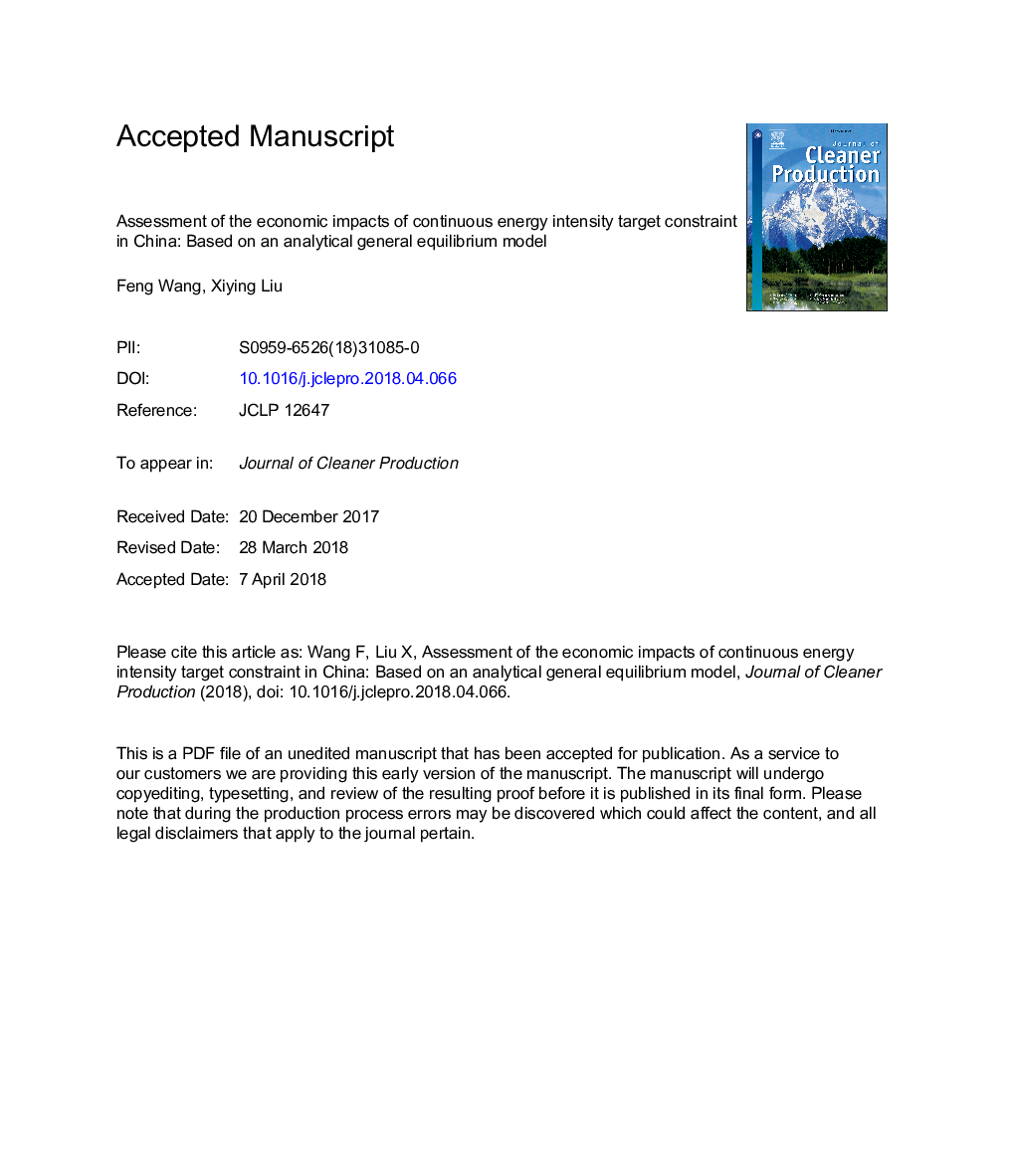| کد مقاله | کد نشریه | سال انتشار | مقاله انگلیسی | نسخه تمام متن |
|---|---|---|---|---|
| 8095084 | 1522064 | 2018 | 51 صفحه PDF | دانلود رایگان |
عنوان انگلیسی مقاله ISI
Assessment of the economic impacts of continuous energy intensity target constraint in China: Based on an analytical general equilibrium model
ترجمه فارسی عنوان
ارزیابی تأثیرات اقتصادی محدودیت هدف محدودیت شدت انرژی در چین: بر اساس یک مدل تعادل عمومی تحلیلی
دانلود مقاله + سفارش ترجمه
دانلود مقاله ISI انگلیسی
رایگان برای ایرانیان
موضوعات مرتبط
مهندسی و علوم پایه
مهندسی انرژی
انرژی های تجدید پذیر، توسعه پایدار و محیط زیست
چکیده انگلیسی
Based on the framework of analytical general equilibrium model, this study builds an energy intensity target (EIT) constraint model, and simulates the impacts of continuous EIT constraint policy on the fossil fuel production (FFP) sector, non-fossil-fuel production (NFFP) sector, household sector and price system in China. The main findings of this paper are, firstly, the EIT constraint can change the marginal products and the cross-price elasticities of input factors. Secondly, stricter EIT constraint can transfer capital and labor inputs from the FFP sector to the NFFP sector, and lead to a “contractionary effect” in the FFP sector - shown as declining inputs and output. The “contractionary effect” will decline gradually or even fade away if the EIT constraint is gradually reduced. Thirdly, if the total capital and labor inputs in the whole economy continue to grow at certain rates, along with the weakening of the EIT constraint, the reduction in energy input and the growth of capital and labor inputs in the NFFP sector will slow down, however, the growth rates of output and intermediate input will increase continuously. Fourthly, the EIT constraint has negative impacts on the NFFP sector, price system and household consumption, but these impacts are affordable to the whole economy. If the EIT constraint is loosened under a certain level, it may not curb the growth of fossil fuel consumption anymore. Therefore, other supporting policies for energy conservation must be in place.
ناشر
Database: Elsevier - ScienceDirect (ساینس دایرکت)
Journal: Journal of Cleaner Production - Volume 189, 10 July 2018, Pages 197-210
Journal: Journal of Cleaner Production - Volume 189, 10 July 2018, Pages 197-210
نویسندگان
Feng Wang, Xiying Liu,
